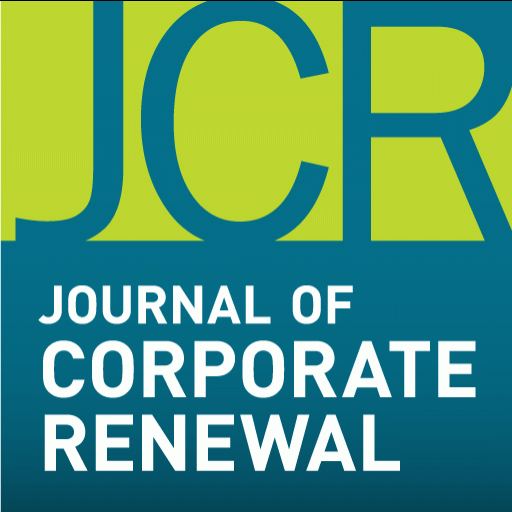
By Harold Bordwin, Principal & Heather Milazzo, Vice President, Keen-Summit Capital Partners LLC
Just as a debtor selling real estate in a bankruptcy proceeding engages a bankruptcy attorney to handle legal work and a financial advisor for management consulting and financial reporting services, the debtor should also engage a real estate advisor who specializes in selling assets in bankruptcy.
The business model of a typical real estate broker is to gather as many listings as possible on the theory that with a sufficient number, eventually something will sell and a commission will be earned. A typical real estate broker’s marketing efforts involve listing his/her assets on the internet and calling “the usual suspects.”1 Such an approach doesn’t work well in the time pressured insolvency world, where the parties in interest expect an aggressive, transparent marketing process that (a) quickly produces results, and (b) substantiates findings in a sale order that the buyer was a good faith buyer, that the transaction was negotiated at arm’s length, and that the proposed sale transaction is the highest and best offer in the market.
Real estate advisors who focus on sales under Section 363 of the U.S. Bankruptcy Code understand what a debtor-seller needs: a real estate professional who will:
- Act in an open and transparent manner
- Aggressively market assets to create an accelerated sales process
- Quickly create a competitive marketplace
- Solicit competing bids
- Negotiate with counterparties at arm’s length
Early in the evolution of bankruptcy practice, sophisticated buyers of assets realized that if they entered into an asset purchase agreement with a debtor-seller without what are now referred to as stalking horse protections, they would be setting the floor for an auction in which other buyers could show up in Bankruptcy Court and present higher and better offers. In that scenario, a buyer who stepped forward early risked publically disclosing its business plans to competitors, losing its investment of time and money in due diligence, and tying up capital.
In essence, potential buyers were incentivized to avoid such risks by not showing up until the last minute when assets were being sold at auction. In a scenario without a stalking horse contract, the debtor-seller and its creditors were faced with a great deal of uncertainty.
A stalking horse is a buyer that enters into an asset purchase agreement with the debtor, understanding that its contract will be the starting point for an auction and accepting that role in exchange for certain benefits. In the sale of real estate, the use of a stalking horse is unique to bankruptcy sales. Traditional real estate brokers are unfamiliar with the concept of a stalking horse and the overbidding process.
From the perspective of the debtor-seller, having a stalking horse is valuable for several reasons. It locks in the buyer but gives the debtor-seller two bites of the apple—with a purchase agreement in hand, the debtor can still seek higher and better offers during an auction. Having a stalking horse sets the floor in terms of transaction price and terms, validates the asset in the marketplace, and facilitates the overall sale process by establishing a form of contract (the stalking horse contract) as the basis for a transaction.
Stalking Horse Incentives
The most common financial incentive for a stalking horse is an agreement under which the debtor agrees to reimburse the stalking horse’s due diligence and legal expenses if it is overbid at the auction. The expense reimbursement is usually capped and, like all stalking horse incentives, is subject to Bankruptcy Court approval.
Another common financial incentive for a stalking horse is the breakup fee, which typically is calculated as a percentage of the initial stalking horse contract price. It is paid if the stalking horse is outbid and the asset is sold to a third party. The breakup fee, which typically ranges from 1 to 3 percent of the purchase price of the stalking horse agreement, is commonly recognized as the cost for inducing an initial bidder to set the floor and subject its contract to an auction. For fear of chilling the bidding, Bankruptcy Courts rarely approve a breakup fee in excess of 3 percent.
Once a stalking horse has negotiated for an expense reimbursement and/or a breakup fee, it benefits not only from the assurance that it will get those funds if it is overbid, but also because any competing bids must cover the amount of any expense reimbursement and breakup fee. This gives the stalking horse a distinct bidding advantage at the auction. Moreover, it is not unusual for a stalking horse to negotiate for the establishment of an initial bid increment: a dollar amount that the first bidder must bid to top the stalking horse’s bid (in addition to any expense reimbursement and/or breakup fee).
For example, if an asset purchase agreement is for $5 million with a 2 percent breakup fee and an agreement that the initial bid increment and all subsequent bids must be at least $50,000 higher, the minimum bid for a third party to participate in the auction would be $5.15 million—i.e., $5 million plus the breakup fee of $100,000 plus the initial bid increment of $50,000.
If a third party bid $5.15 million, the value of that bid to the debtor-seller would be $5.05 million (i.e., $5.15 million less the $100,000 breakup fee). If the stalking horse elected to overbid the third party’s bid, it could do so by bidding $5.1 million. Because the breakup fee is payable only to the stalking horse buyer, the stalking horse in this example would always have a $100,000 bidding advantage against any other bidder.
In addition to the financial incentives it enjoys, the stalking horse also benefits from being able to negotiate the contract against which competing offerors must bid and the auction bid procedures. A well-crafted set of bid procedures benefits the debtor and the stalking horse. In particular, such bid procedures typically require third party bidders do all of the following:
- Provide a binding, executed asset purchase agreement
- Tender a good-faith deposit
- Confirm that their offer is all-cash with no financing or other contingencies
- Provide written evidence that they are financially capable of closing the sale
- Confirm that they have the legal authority to bid
Differing Priorities
To a traditional real estate broker, the concept of signing up a stalking horse subject to overbids is an anathema. Traditional brokers don’t expect to work
for the debtor-seller again; instead, they are incentivized to form close ties to their buyers, with whom they will want to do future leasing and real estate brokerage work. Forming a relationship with a buyer and then marketing that buyer’s contract for overbids undermines that relationship. However, for a bankruptcy real estate professional, who generates referral business from other bankruptcy professionals, marketing a stalking horse contract for overbids is second nature.
Ultimately, the success of 363 sales and the credibility of the overbid process is reliant on the work of a disinterested real estate team that has the bankruptcy real estate experience to orchestrate in a timely fashion an aggressive marketing process that can be substantiated in Bankruptcy Court.
1 Moreover, traditional real estate brokers operate in a world that is the antithesis of “disinterestedness.” Brokers and brokerage firms frequently represent both the buyer and seller in the same transaction or a landlord and a tenant in the same transaction. They also frequently engage in undisclosed fee sharing.
Click here to read the April 2017 issue of the Journal of Corporate Renewal




